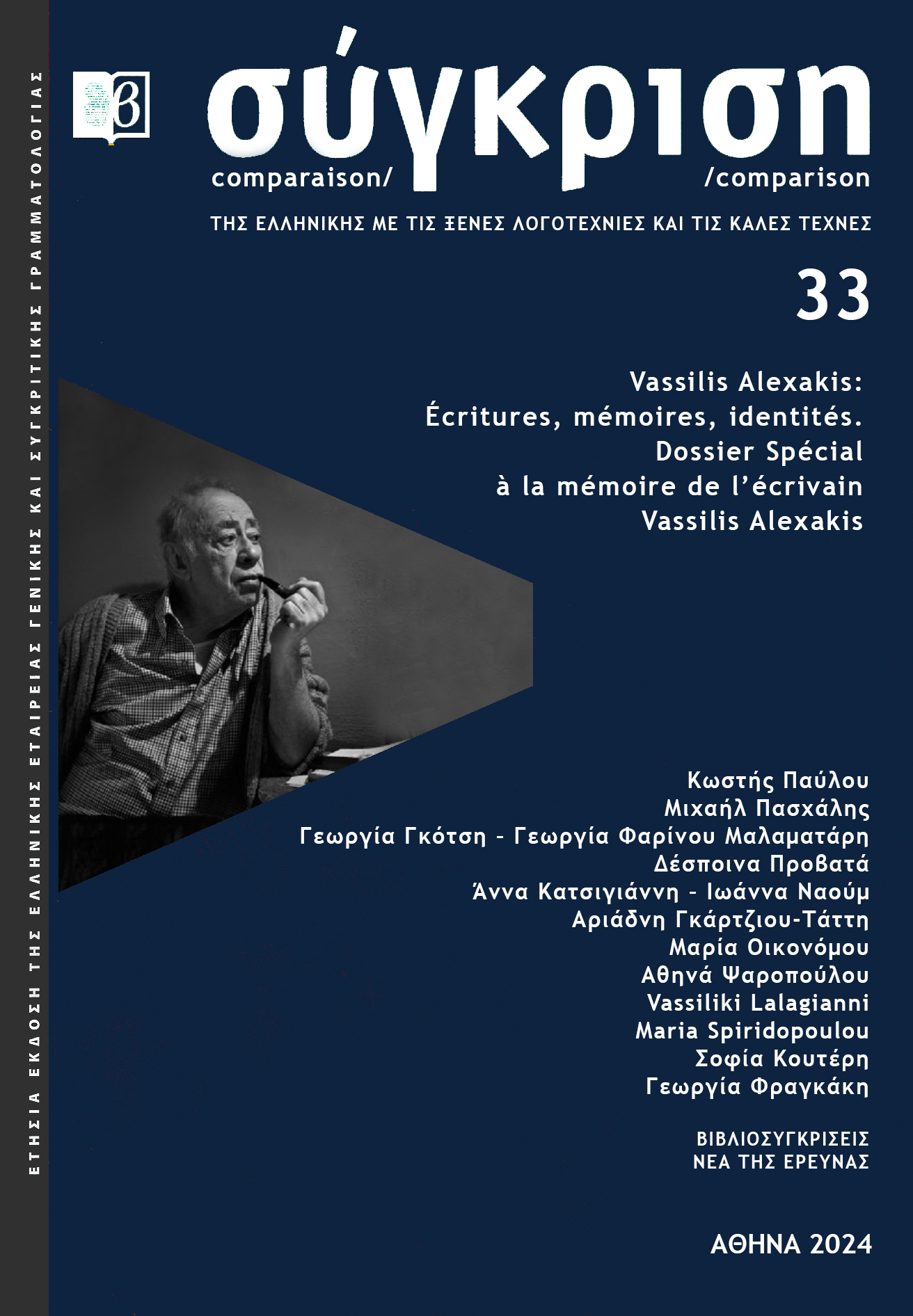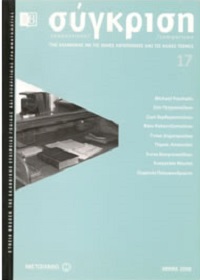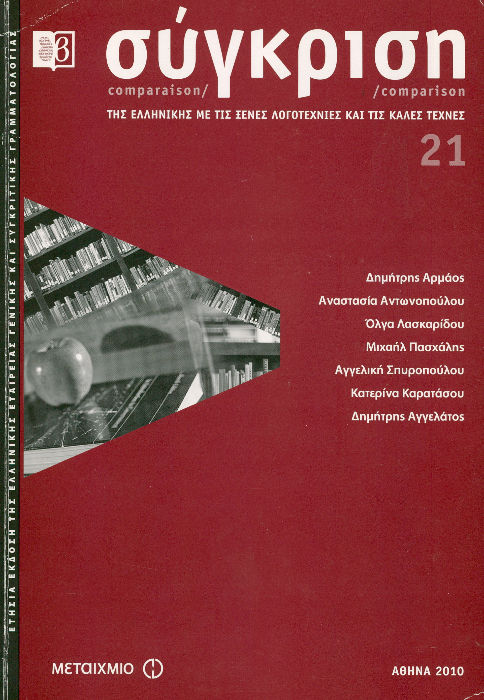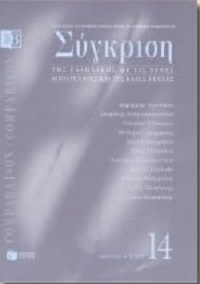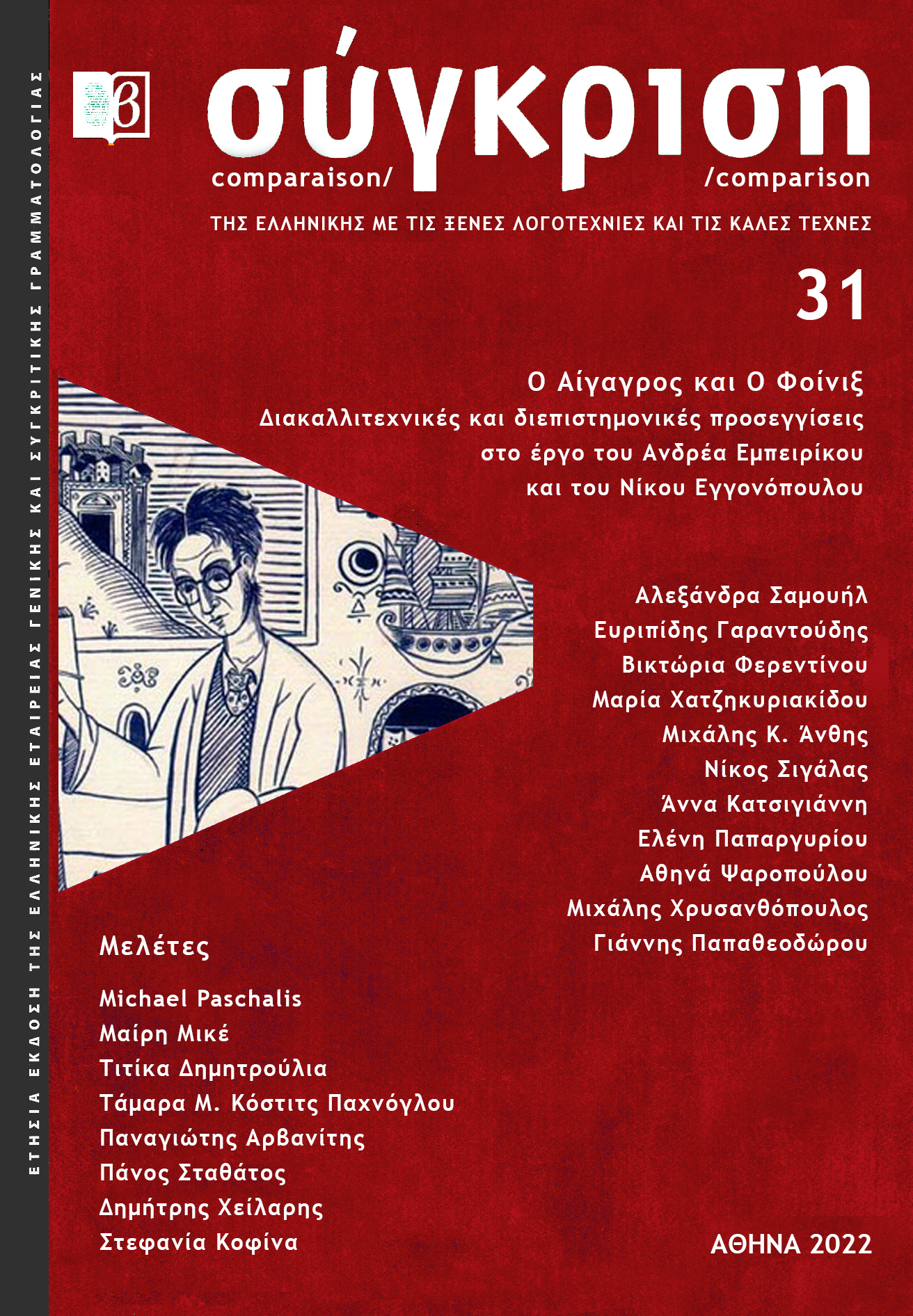Η αληθοφάνεια των αγαλμάτων και το νόημα της Γυφτοπούλας του Α. Παπαδιαμάντη
Abstract
Plethon’s lifelike statues and the meaning of Papadiamantis’ The Gypsy Girl
The description (ekphrasis) of the divine statues in Plethon’s cave conforms to the strict rhetorical rules of the Second Sophistic. It specifically distinguishes the statue from the divinity itself and uses lifelikeness formulas to portray motion. This sort of description presupposes rhetorical education and is undertaken by the narrator who speaks now in the name of a “perceptive observer” (the equivalent of ancient ἐξηγητής) and now in Plethon’s name. The distinction between the lifeless and the lifelike statue is crucial for comprehending the meaning of The Gypsy Girl. The above-mentioned ekphrastic technique involves a deeper distinction between seeming and being, between the ancient gods as lifeless creations and the gods as constructions standing for Plethon’s project to revive ancient religion. The earthquake that strikes the cave at the closure of the novel marks the destruction of idols, precisely because their motion ceases to be virtual and becomes real (a “dance” according to the narrator; cf. the statue of Apollo raising his leg and giving the impression that the lifeless god is about to dance).
Article Details
- How to Cite
-
Paschalis, M. (2025). Η αληθοφάνεια των αγαλμάτων και το νόημα της Γυφτοπούλας του Α. Παπαδιαμάντη. Comparison, (33), 174–192. Retrieved from https://ejournals.epublishing.ekt.gr/index.php/sygkrisi/article/view/37464
- Issue
- No. 33 (2024)
- Section
- Articles

This work is licensed under a Creative Commons Attribution-NonCommercial-ShareAlike 4.0 International License.
Authors who publish with this journal agree to the following terms:
- Authors retain copyright and grant the journal right of first publication with the work simultaneously licensed under a Creative Commons Attribution Non-Commercial License that allows others to share the work with an acknowledgement of the work's authorship and initial publication in this journal.
- Authors are able to enter into separate, additional contractual arrangements for the non-exclusive distribution of the journal's published version of the work (e.g. post it to an institutional repository or publish it in a book), with an acknowledgement of its initial publication in this journal.
- Authors are permitted and encouraged to post their work online (preferably in institutional repositories or on their website) prior to and during the submission process, as it can lead to productive exchanges, as well as earlier and greater citation of published work (See The Effect of Open Access).

